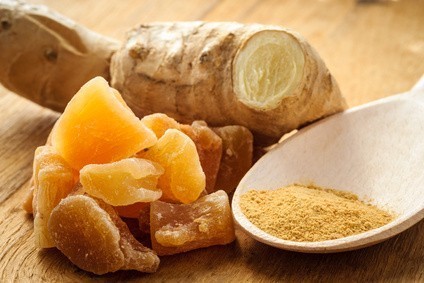Spicy ginger deserves a warm welcome for the holidays as the chill of winter sets in. The root has been grown in Asia for millennia and is used fresh, sliced or minced, in all kinds of savory dishes. Its health-boosting phytochemicals and possible ability to quell an upset stomach also make it popular around the world as a tea, candy and dried and as a ground spice in baked sweets.
Historians have traced European use of gingerbread back to the Crusades in the 11th century. Medieval folk would mix together ground almonds, stale breadcrumbs, rosewater, sugar and ginger them press it into molds sometimes carved in the likeness of royal family members or religious symbols. Shakespeare referred to gingerbread in his play “Love’s Labor’s Lost,” and gingerbread was reputedly a favorite food of Queen Elizabeth.
 Today we have the luxury of flour to use in making fragrant gingerbread loaves and cookies to spice up the winter holidays. Molasses and brown sugar give gingerbread the characteristic taste and chewiness we enjoy today.
Today we have the luxury of flour to use in making fragrant gingerbread loaves and cookies to spice up the winter holidays. Molasses and brown sugar give gingerbread the characteristic taste and chewiness we enjoy today.
AICR’s Health-e-Recipe for Ginger Snaps are crisp outside and soft inside, using less fat as well as some whole-wheat flour to make them better for your healthy, plus cinnamon and a dash of black pepper for extra zing. At 75 calories and only 3 grams of fat per cookie, they’re less unhealthy than some other holiday treats and one or two will satisfy the gingerbread fan in you.
Controlling the Crispness
If you like crisper cookies, use a non-dairy stick shortening that is a blend of oils. Or, for a softer texture, use a soft tub spread instead for cookies that have a crisp outer layer then turn chewy overnight. The softer cookies’ batter can be dropped from a spoon onto your baking sheet.
For more cancer-preventive recipes, visit our Healthy Recipes. Subscribe to our weekly Health-e-Recipes.
For more yummy AICR recipes using ginger, try Carrot Soup with Orange and Ginger, Ginger Carrot Salad with Cranberries and Asian Chicken with Honey and Ginger.





